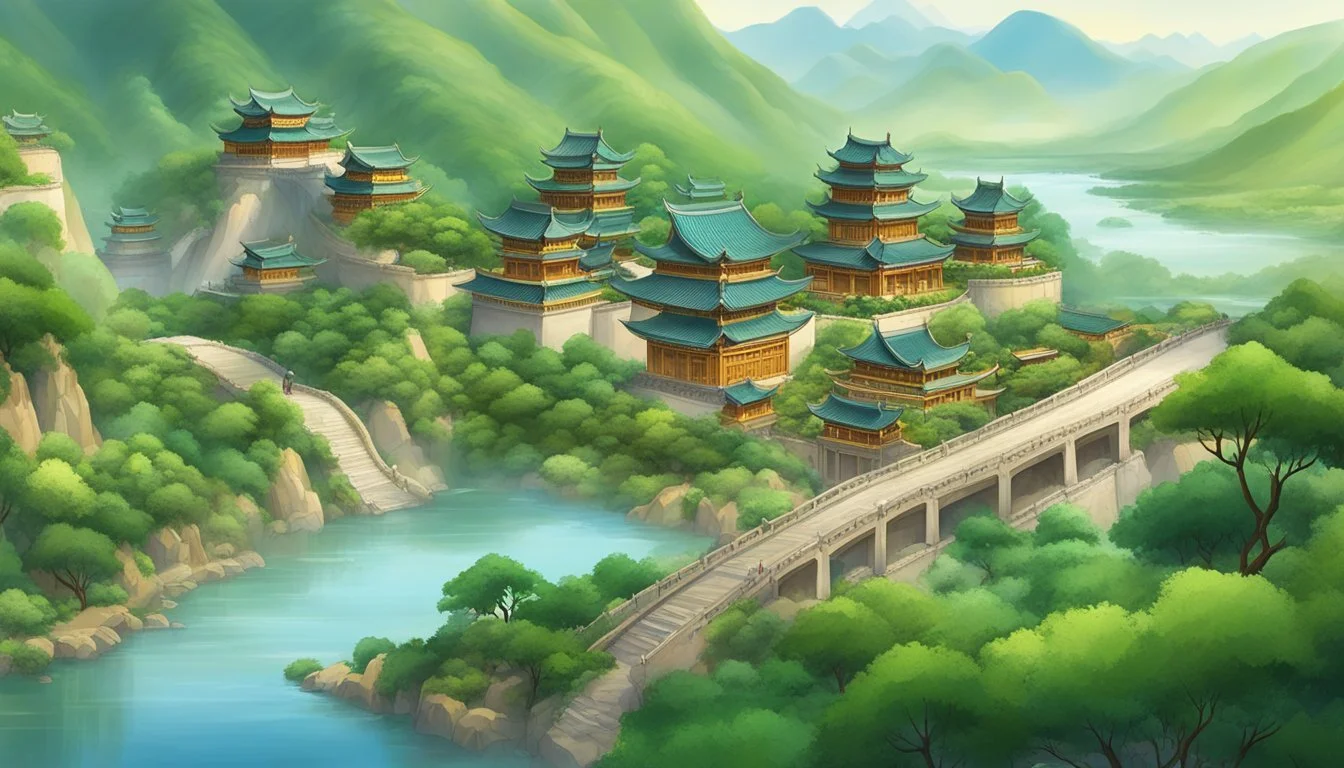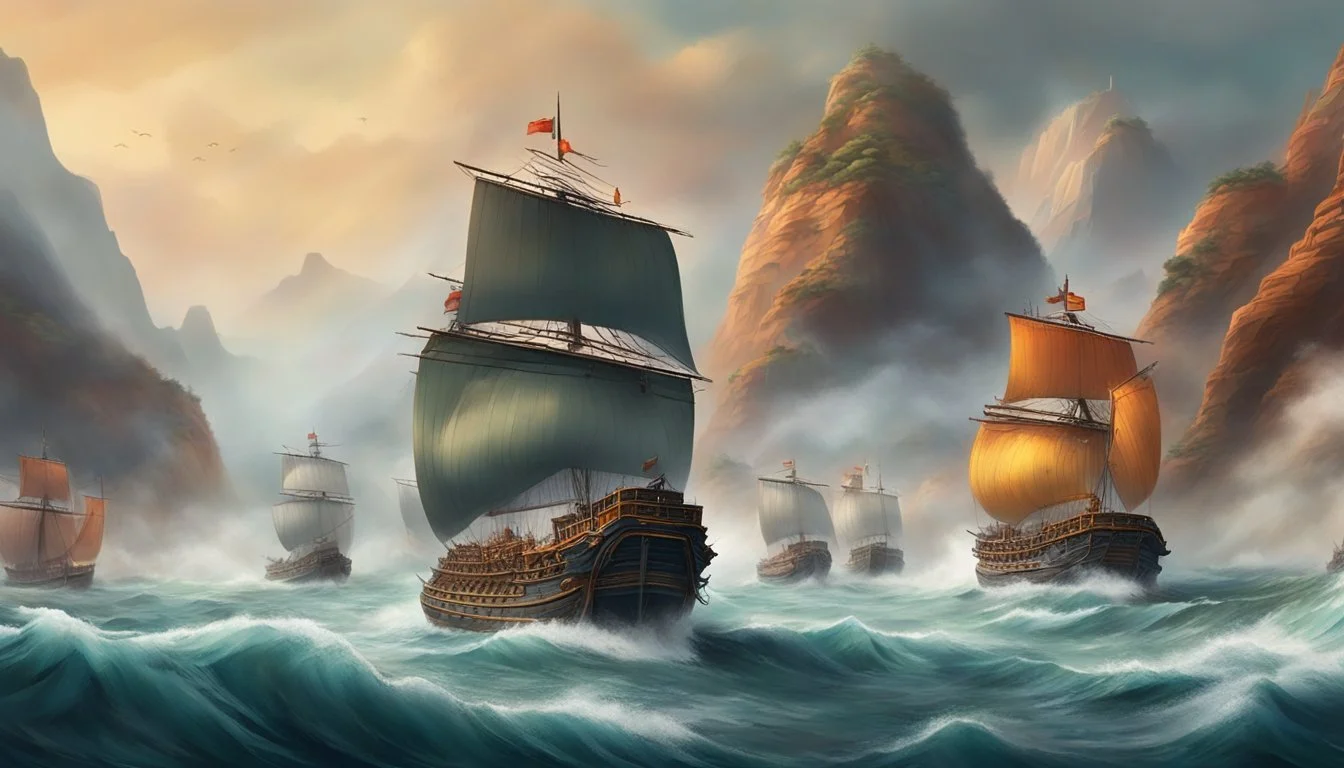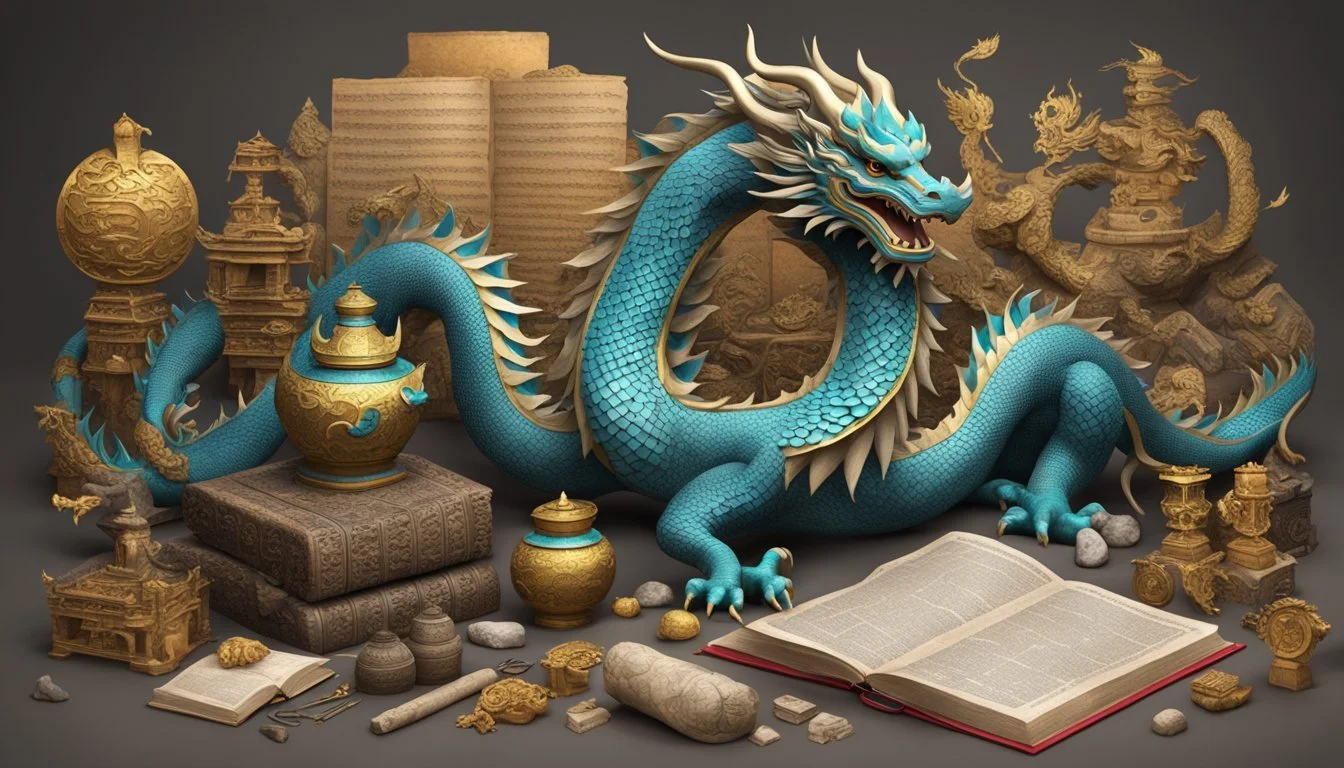11 Documentaries Examining the History of Ancient China
A Journey Through Time and Dynasties
Documentaries about ancient China offer viewers a captivating window into one of the world's oldest civilizations. These films explore the rich history, culture, and achievements of Chinese society spanning thousands of years. From the construction of the Great Wall to the archaeological discoveries of lost cities, documentaries unveil the secrets of China's past through expert insights and stunning visuals.
These 11 documentaries provide an in-depth examination of ancient China's most fascinating aspects, including its dynastic rulers, technological innovations, and enduring cultural traditions. Viewers can expect to learn about pivotal historical events, marvel at architectural wonders, and gain a deeper understanding of the foundations that shaped modern China. Through a mix of historical reenactments, expert commentary, and cutting-edge archaeological findings, these films bring ancient China to life for contemporary audiences.
1) "The First Emperor of China"
"The First Emperor of China" is a documentary that explores the life and legacy of Qin Shi Huang, the first emperor to unify China. The film traces his rise to power, his reign, and eventual downfall.
Employing cutting-edge science and archaeological discoveries, the documentary provides insights into the emperor's tomb and its secrets. It offers unprecedented access to new excavations at key historical sites.
Qin Shi Huang is often compared to other great conquerors like Alexander the Great and Julius Caesar. He commanded millions, united China's warring states, and initiated the construction of the Great Wall.
The documentary highlights the emperor's visionary yet tyrannical rule. It examines his brutal punishment methods and efforts to centralize power, which allowed him to create a unified Chinese empire.
Filmed in Xi'an, the ancient capital, the documentary showcases the emperor's magnificent mausoleum complex. This includes the famous Terracotta Army, an astounding collection of clay soldiers meant to protect Qin Shi Huang in the afterlife.
Through expert analysis and dramatic reenactments, the film brings to life the achievements and controversies surrounding China's first emperor. It offers viewers a comprehensive look at this pivotal figure in Chinese history.
2) "China's Megatomb Revealed"
This National Geographic documentary explores the tomb of China's first emperor, Qin Shi Huang. The film investigates the vast mausoleum complex near Xi'an, which is famously home to the Terracotta Army.
Albert Lin leads the exploration, using cutting-edge technology to uncover secrets hidden for over 2,000 years. The documentary reveals that the 8,000 terracotta warriors are just a small part of a much larger necropolis.
The mausoleum complex covers an area comparable to Manhattan, with most of it still unexcavated. New discoveries shed light on the emperor's life, death, and the succession that followed.
Advanced imaging techniques allow researchers to peer beneath the surface without disturbing the site. These non-invasive methods have revealed previously unknown structures and artifacts.
The film also examines the possibility of foreign influences on the tomb's construction and design. It presents evidence that challenges traditional views of ancient China's isolation.
"China's Megatomb Revealed" offers viewers a glimpse into the extraordinary burial practices of China's imperial past. It combines archaeological insights with modern scientific methods to unravel historical mysteries.
3) "The Great Wall of China: The Hidden Story"
This documentary explores the hidden aspects of China's iconic Great Wall. It examines the varied construction methods used throughout its long history, particularly focusing on the 16th century brick-built sections.
The film investigates why the wall was built in the first place, delving into its purpose beyond mere defense. It reveals new evidence that challenges previously held beliefs about the wall's history.
One fascinating aspect covered is the complex signaling system used along the wall. This communication network allowed information to be rapidly transmitted across vast distances.
The documentary also uncovers a surprising ingredient that has helped preserve the wall for centuries. This revelation sheds light on the impressive durability of this ancient structure.
Experts featured in the film include historians and archaeologists who provide insights into the wall's construction and significance. Their research contributes to a deeper understanding of this engineering marvel.
Through stunning visuals and expert commentary, "The Great Wall of China: The Hidden Story" offers viewers a fresh perspective on one of the world's most famous landmarks.
4) "Confucius: Words of Wisdom"
This documentary explores the life and teachings of Confucius, the influential Chinese philosopher and educator. Born in 551 BCE, Confucius lived during a tumultuous period in China's history known as the Spring and Autumn period.
The film delves into Confucius's background, highlighting his humble origins and the hardships he faced. It examines his vision for improving Chinese society through moral education and ethical governance.
Confucius's key philosophical concepts are presented, including filial piety, social harmony, and the importance of education. The documentary explains how these ideas shaped Chinese culture and continue to influence East Asian societies today.
Experts featured in the film include prominent Chinese history scholars and even a descendant of Confucius himself. Their insights provide valuable context for understanding the sage's enduring legacy.
The documentary also touches on Confucius's impact beyond China. It discusses how his teachings have contributed to East Asia's economic development in recent decades, demonstrating the continued relevance of his wisdom.
5) "Secrets of the Terracotta Warriors"
This documentary provides exclusive access to groundbreaking research on China's famed Terracotta Army. The film explores recent discoveries made by University College London and the Terracotta Army Museum.
Viewers gain new insights into the creation process of the terracotta figures. Revolutionary 3D computer modeling techniques reveal previously unknown details about the warriors' heads.
The documentary challenges existing understanding of the site's true extent. It showcases findings that go beyond the initial 1974 excavation, which uncovered only a fraction of this extraordinary treasure.
Experts use cutting-edge technology to uncover hidden aspects of the Terracotta Army. These advancements shed light on the manufacturing methods and artistic techniques employed by ancient Chinese craftsmen.
The film offers a fresh perspective on one of the world's most famous archaeological discoveries. It combines historical context with modern scientific analysis to provide a comprehensive view of the Terracotta Warriors.
6) "Lost Treasures of Ancient China"
This documentary explores three intriguing mysteries from ancient China's buried tombs. Archaeologist Agnes Hsu-Tang leads viewers on a captivating journey to uncover hidden treasures and long-lost secrets.
The film visits an ancient kingdom in Sichuan, revealing artifacts that provide insights into a lesser-known civilization. Viewers are transported to a time of powerful rulers and complex societies.
In Guangzhou, the Nanyue King's Tomb yields a remarkable jade suit, showcasing the advanced craftsmanship and beliefs of the era. The intricate details of this burial garment offer clues about ancient Chinese funeral practices and social hierarchy.
The documentary culminates with the exploration of a tomb believed to be the final resting place of Cao Cao, a legendary historical figure. This discovery sent ripples through the archaeological community, potentially rewriting aspects of Chinese history.
Through expert analysis and stunning visuals, "Lost Treasures of Ancient China" brings to life the fascinating world of ancient Chinese archaeology. It demonstrates how each artifact and tomb contributes to our understanding of this rich civilization.
7) "Mysterious China: The Yangtze Civilization"
"Mysterious China: The Yangtze Civilization" explores the ancient cultures that flourished along China's longest river. The documentary sheds light on archaeological discoveries from the Neolithic period to the Bronze Age.
Viewers learn about the Liangzhu culture, which existed around 3300-2300 BCE. The film showcases intricate jade artifacts and early examples of water management systems found in the region.
The Sanxingdui culture, dating back to 1600-1000 BCE, is another focus of the documentary. It presents the enigmatic bronze masks and sculptures unearthed at the Sanxingdui site in Sichuan province.
The film examines the development of rice cultivation along the Yangtze River. It highlights how this agricultural innovation shaped the growth of early Chinese civilizations.
Experts discuss the significance of oracle bones discovered in the area. These ancient artifacts provide valuable insights into early Chinese writing systems and divination practices.
The documentary also explores the mysterious disappearance of some Yangtze civilizations. It presents theories about climate change and natural disasters that may have contributed to their decline.
8) "The Battle of Red Cliffs"
The Battle of Red Cliffs was a pivotal naval engagement in Chinese history. It took place during the winter of 208-209 AD along the Yangtze River, marking a crucial moment in the late Han dynasty period.
The conflict pitted the powerful northern warlord Cao Cao against the allied southern forces of Sun Quan and Liu Bei. Cao Cao's massive army, reportedly numbering up to 800,000 men, faced a much smaller but strategically positioned southern coalition.
Despite his numerical advantage, Cao Cao's forces were unfamiliar with naval warfare and susceptible to the defenders' tactics. The southern allies used fire ships to great effect, burning much of Cao Cao's fleet and forcing his retreat.
This decisive victory prevented Cao Cao from conquering the southern territories. It led to the division of China into three major power centers, ushering in the Three Kingdoms period.
The Battle of Red Cliffs has been immortalized in Chinese literature, art, and popular culture. It features prominently in the 14th-century novel "Romance of the Three Kingdoms" and has been the subject of numerous films and adaptations.
9) "Nefertiti in China? The Mysterious Likeness"
This documentary explores an intriguing archaeological discovery in China that bears a striking resemblance to ancient Egyptian queen Nefertiti. The film examines a carved jade bust unearthed in Shaanxi province, dating back to the Han Dynasty.
Experts analyze the facial features, headdress, and artistic style of the carving, comparing them to known depictions of Nefertiti. The documentary presents various theories about potential cultural exchanges between ancient Egypt and China.
Historians discuss the possibility of trade routes connecting the two civilizations during this period. They explore evidence of Egyptian artifacts found in China and Chinese goods discovered in Egypt.
The film also delves into the debate surrounding the authenticity of the jade bust. Some scholars argue it could be a later reproduction or a case of coincidental similarity.
Archaeologists and art historians provide insights into the significance of this discovery for understanding ancient cross-cultural interactions. The documentary presents multiple perspectives on this enigmatic artifact.
10) "Ancient China Unearthed: Han Dynasty"
"Ancient China Unearthed: Han Dynasty" explores the rich history of one of China's most influential periods. The documentary delves into archaeological discoveries that shed light on the Han Dynasty's advanced civilization.
Viewers are taken on a journey through ancient cities and burial sites, revealing the sophistication of Han architecture and engineering. The film showcases intricate artifacts, including the famous terracotta warriors and ornate jade burial suits.
Experts discuss the Han Dynasty's technological innovations, such as paper-making and the invention of the seismograph. The documentary examines the empire's extensive trade networks, including the Silk Road, which facilitated cultural exchange across Asia and Europe.
Political and social structures of the Han period are explored through recovered texts and administrative records. The film highlights the dynasty's lasting impact on Chinese culture, from Confucian principles to artistic traditions.
Through state-of-the-art computer graphics, "Ancient China Unearthed" reconstructs Han-era palaces and cities, offering viewers a vivid glimpse into daily life during this golden age of Chinese history.
11) "The Legend of Silk: Origins of the Silk Road"
"The Legend of Silk: Origins of the Silk Road" explores the beginnings of one of history's most significant trade routes. The documentary traces the discovery of silk production in ancient China, dating back to around 3000 BCE.
It examines the role of Empress Leizu, who, according to legend, accidentally discovered silk while drinking tea under a mulberry tree. The film details the complex process of silk production and its initial confinement within China's borders.
The documentary delves into the establishment of the Silk Road during the Han Dynasty (206 BCE - 220 CE). It highlights how silk became a prized commodity, spurring trade between China and distant regions.
Viewers learn about the cultural exchanges facilitated by the Silk Road, including the spread of Buddhism from India to China. The film also covers the various goods traded along this route, such as spices, precious stones, and textiles.
The documentary examines the challenges faced by merchants traversing the Silk Road, including harsh desert conditions and encounters with bandits. It presents archaeological evidence and historical accounts to paint a vivid picture of life along this ancient trade network.
Cultural Significance of Ancient China
Ancient China's cultural impact spans millennia, shaping philosophies and societal structures across Asia. Its rich traditions continue to influence art, literature, and thought systems worldwide.
Influence on Asian Civilizations
Ancient Chinese culture profoundly impacted neighboring civilizations. Its writing system spread to Korea, Japan, and Vietnam, facilitating cultural exchange. Chinese architectural styles influenced temple and palace designs across East Asia.
Chinese inventions like paper, gunpowder, and the compass revolutionized technology globally. Silk production and trade routes connected China to distant lands, fostering economic and cultural links.
Chinese art forms, including calligraphy and landscape painting, inspired artists throughout Asia. Traditional Chinese medicine practices spread widely, shaping health beliefs in many countries.
Philosophies and Thought Systems
Confucianism, originating in ancient China, emphasized social harmony and ethical behavior. Its principles shaped governance, education, and family structures across East Asia for centuries.
Taoism, another major Chinese philosophy, promoted balance with nature and spiritual cultivation. It influenced art, literature, and traditional medicine practices.
Buddhism, though originating in India, was significantly transformed in China. Chinese Buddhist schools like Chan (Zen) later spread to Japan and Korea, deeply impacting their cultures.
Chinese concepts of yin and yang, as well as the Five Elements theory, became fundamental to East Asian worldviews and practices.
Archaeological Discoveries
Recent excavations and scientific analyses have revolutionized our understanding of ancient Chinese civilizations. New finds continue to shed light on the technologies, social structures, and daily lives of people from thousands of years ago.
Terracotta Army Insights
The Terracotta Army, discovered in 1974, remains a subject of ongoing research. Recent studies have revealed new details about the manufacturing techniques used to create the warriors. Analysis of the pigments shows that the figures were originally painted in vibrant colors, including purple, red, and green.
Experts have identified distinct workshops responsible for producing different parts of the army. This suggests a highly organized production system. Advanced imaging techniques have also uncovered previously invisible details, such as intricate patterns on weapons and armor.
Artifacts and Daily Life
Excavations at sites like Sanxingdui have unearthed thousands of artifacts, offering glimpses into ancient Chinese daily life. Bronze masks, gold ornaments, and jade objects reveal sophisticated metalworking and artistic skills. These finds challenge previous assumptions about the complexity of early Chinese societies.
Researchers have discovered remnants of textiles, food, and household items. These provide valuable information about diet, fashion, and domestic practices. DNA analysis of preserved organic materials offers insights into ancient agricultural techniques and plant domestication.
New technologies like ground-penetrating radar have led to the discovery of entire buried cities. These finds are reshaping our understanding of urban planning and social organization in ancient China.





